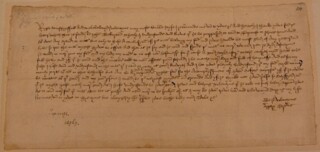Chaucer’s Fault
Mary Wellesley
Don’t like Valentine’s Day? Blame Chaucer. Saint Valentine was a third century Roman martyr. We don’t know much about him. There may in fact have been two Valentines, one a bishop from Terni, the other a priest martyred on the Flaminian Way, though they may also have been the same person. Or possibly neither of them existed. The two hagiographies conform to the usual pattern: vicious Roman leaders in conflict with unrepentant martyrs who keep the faith. But no mention of lovers.
The notion of Valentine’s Day as a day for lovers (and Valentine as their patron saint) seems to begin with Chaucer. In his late 14th-century dream vision, The Parliament of Fowls, he describes a group of birds who gather together in the early spring – on ‘seynt valentynes day’ – to choose their mates for the year. The poem sparked a tradition. In the first half of the 15th century, John Lydgate wrote a solemnified version addressed to the Virgin Mary (perhaps inevitable for a Benedictine monk writing a courtly love poem). In 1477, Margery Brews, a Norfolk woman, wrote a letter to her cousin, John Paston, calling him ‘my right well beloved Valentine’. It’s preserved in the British Library, the earliest known letter of its kind.
Don’t like Valentine’s Day? There’s consolation in Chaucer’s poem, too. It ends with the birds singing a song, having failed to choose their mates and deciding to defer the decision until the next year.
